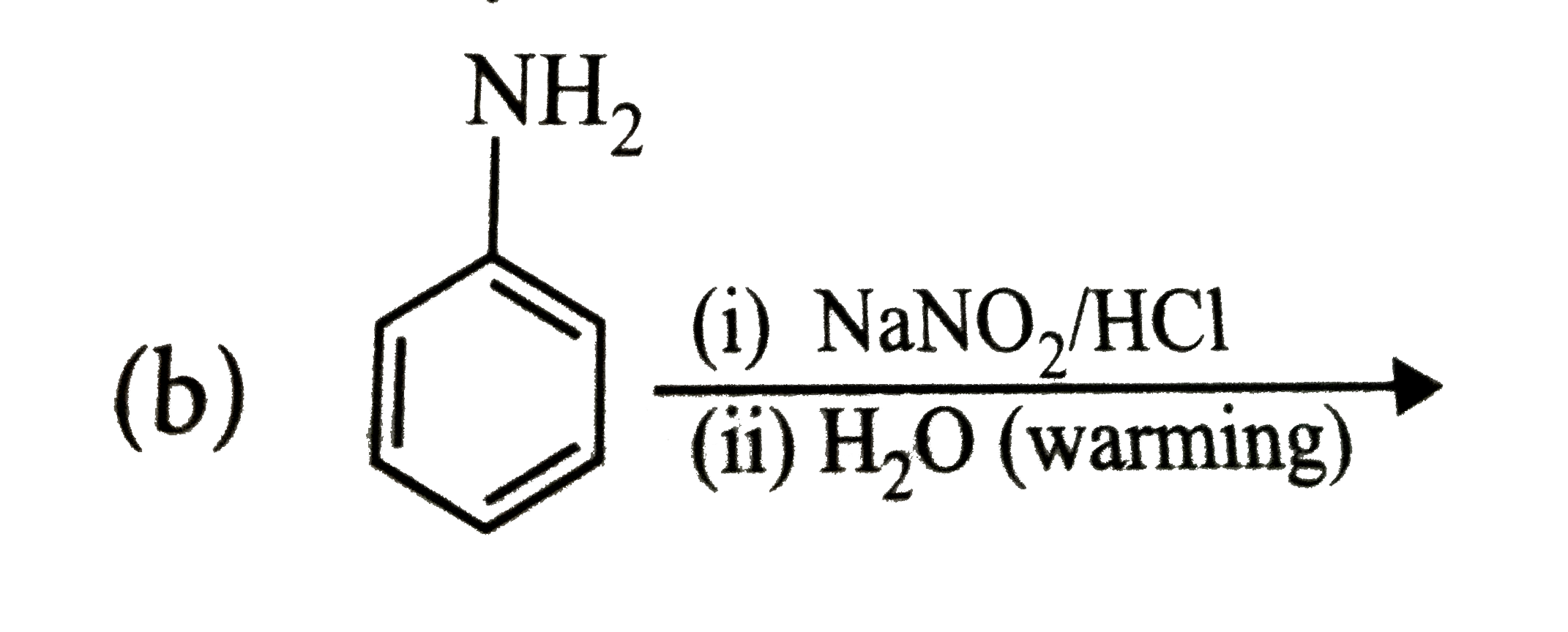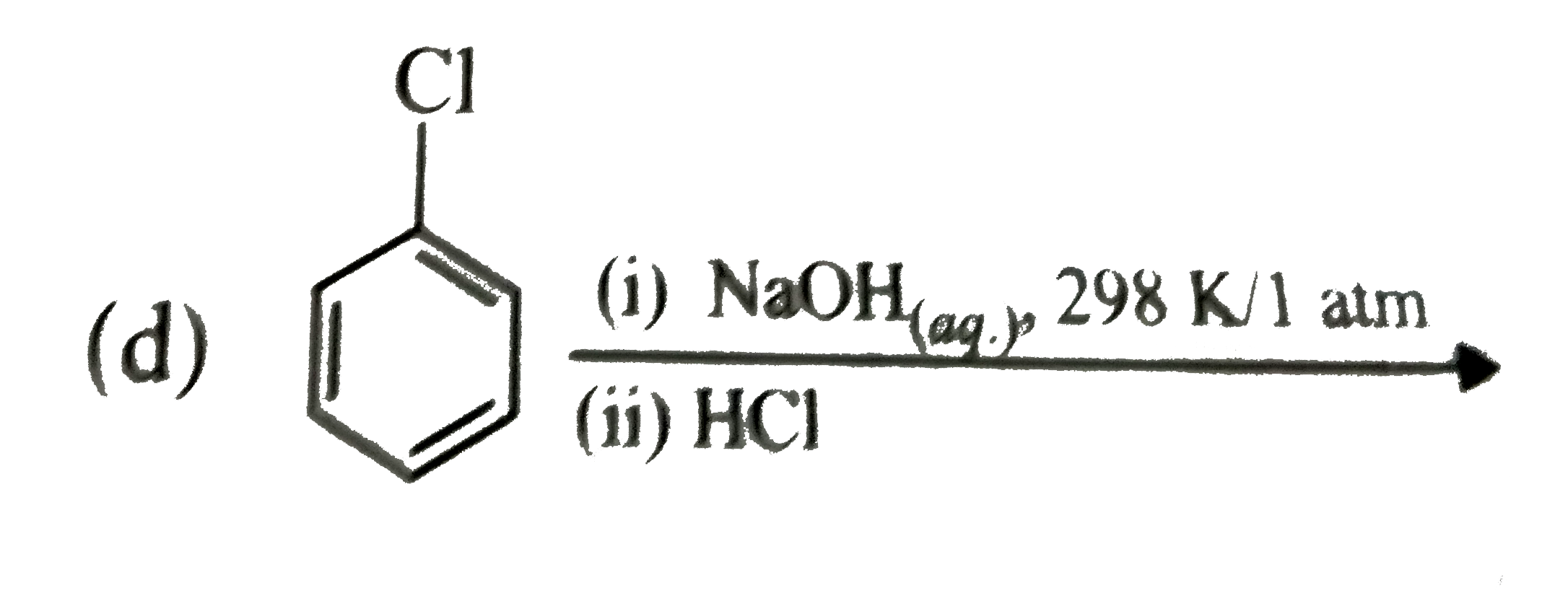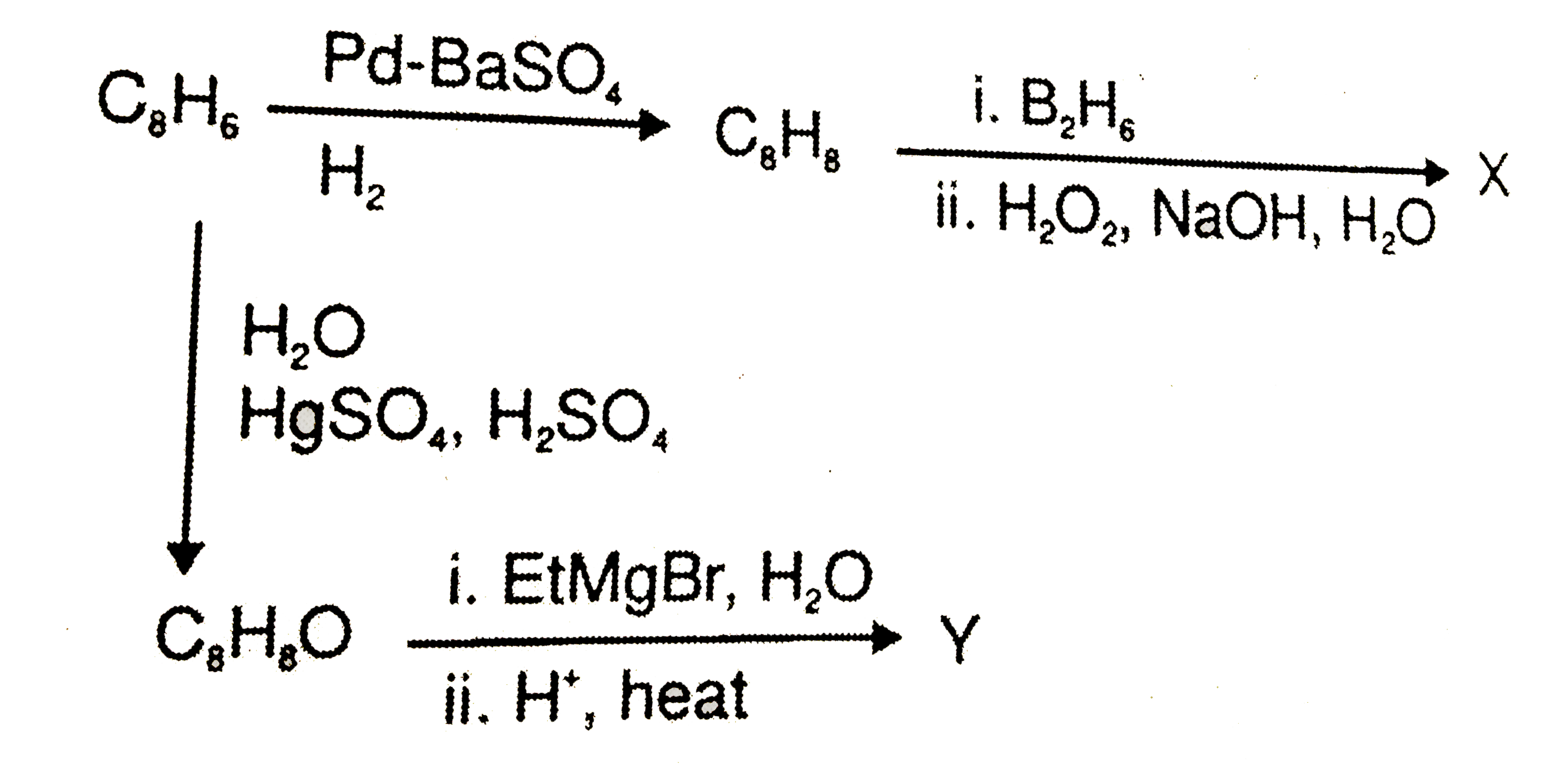Wurtz reaction of methyl iodide yields an organic compound X. Which one of the following reactions also yields X?
C2H5Cl + Mg dryether−−−−→
C2H5 Cl + LiAlH4(→)
C2H5Cl + C2H5Ona→
CHCl3Ag powder−−−−−−−−→Δ
The correct Answer is:B
To solve the problem regarding the Wurtz reaction of methyl iodide yielding an organic compound X, we first need to understand the Wurtz reaction and then evaluate the other reactions to see if they also yield the same compound.
1. Understanding the Wurtz Reaction:
- The Wurtz reaction involves the coupling of alkyl halides in the presence of sodium metal and dry ether.
- For methyl iodide (CH₃I), the reaction can be represented as:
2CH3I+2Nadry ether−−−−−→C2H6+2NaI
- The product formed is ethane (C₂H₆), which is our compound X.
2. Evaluating Other Reactions:
- We need to check which of the given reactions can also yield ethane (C₂H₆).
3. Option 1: C₂H₅Cl with Magnesium in Dry Ether:
- The reaction produces a Grignard reagent (C₂H₅MgBr) and does not yield ethane.
- Conclusion: This option does not yield X.
4. Option 2: C₂H₅Cl with LiAlH₄:
- In this reaction, C₂H₅Cl can form a carbocation (C₂H₅⁺) which can then be reduced by LiAlH₄ to yield ethane.
- The reaction can be represented as:
C2H5Cl+LiAlH4→C2H6+LiCl+AlCl3
- Conclusion: This option yields X (C₂H₆).
5. Option 3: C₂H₅Cl with an Ether:
- This reaction leads to the formation of an ether and does not yield ethane.
- Conclusion: This option does not yield X.
6. Option 4: C₆H₅Cl with Silver Powder:
- This reaction produces ethylene (C₂H₄) and does not yield ethane.
- Conclusion: This option does not yield X.
Final Answer:
The only reaction that yields the same compound X (ethane, C₂H₆) as the Wurtz reaction of methyl iodide is Option 2: C₂H₅Cl with LiAlH₄.
- The Wurtz reaction involves the coupling of alkyl halides in the presence of sodium metal and dry ether.
- For methyl iodide (CH₃I), the reaction can be represented as:
2CH3I+2Nadry ether−−−−−→C2H6+2NaI
- The product formed is ethane (C₂H₆), which is our compound X.
- We need to check which of the given reactions can also yield ethane (C₂H₆).
- The reaction produces a Grignard reagent (C₂H₅MgBr) and does not yield ethane.
- Conclusion: This option does not yield X.
- In this reaction, C₂H₅Cl can form a carbocation (C₂H₅⁺) which can then be reduced by LiAlH₄ to yield ethane.
- The reaction can be represented as:
C2H5Cl+LiAlH4→C2H6+LiCl+AlCl3
- Conclusion: This option yields X (C₂H₆).
- This reaction leads to the formation of an ether and does not yield ethane.
- Conclusion: This option does not yield X.
- This reaction produces ethylene (C₂H₄) and does not yield ethane.
- Conclusion: This option does not yield X.
The only reaction that yields the same compound X (ethane, C₂H₆) as the Wurtz reaction of methyl iodide is Option 2: C₂H₅Cl with LiAlH₄.
Topper's Solved these Questions
- HALOALKANES & HALOARENES Book:VMC MODULES ENGLISHChapter:HALOALKANES & HALOARENES Exercise:EFFICIENT
Explore 100 Videos
- ENVIRONMENTAL CHEMISTRYBook:VMC MODULES ENGLISHChapter:ENVIRONMENTAL CHEMISTRYExercise:JEE Main (Archive)
Explore 39 Videos
- HALOALKANES AND HALOARENESBook:VMC MODULES ENGLISHChapter:HALOALKANES AND HALOARENESExercise:IN-CHAPTER EXERCISE - F
Explore 6 Videos
Similar Questions
Knowledge Check
Which of the following reactions will not yield phenol ?
A B
B C
C D
D
Wurtz reaction using bromoethane yields
A(i) 2-bromobutaneB(ii) n-butaneC(iii) iso-butaneD(iv) ethane.
Compound "X" in the following reaction is

View SolutionCompound "X" in the following reaction is

View SolutionIn the following reaction
_E01_676_Q01.png)
Compound X is :
View SolutionIn the following reactions :

Compound X is
View Solutionwhich of the following yields purgative ?
View SolutionWhich of the following reactions will yield 2, 2-dibromopropane ?
View Solution